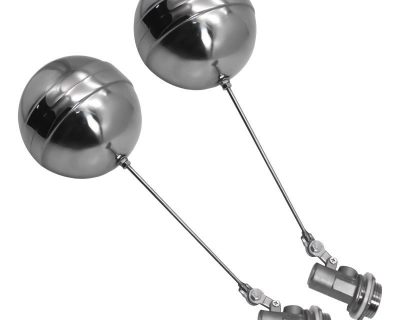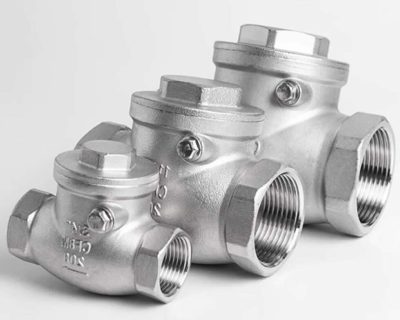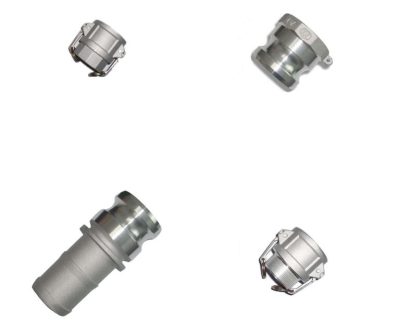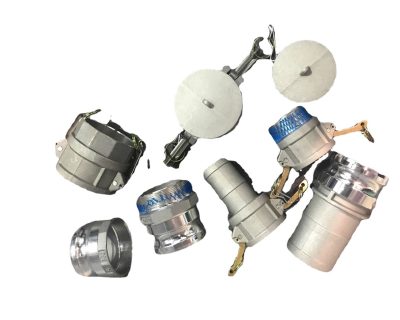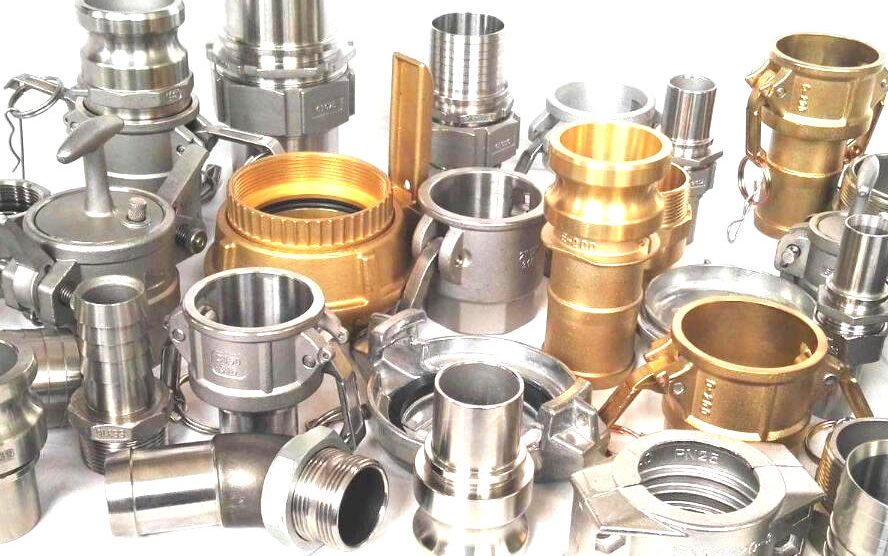
Camlock Coupler Types: Making the Right Choice for Your Project
In today’s industrial landscape, camlock couplers are pivotal in ensuring secure and efficient connections in various applications. The right type can make a significant difference in operational efficiency and safety. This guide provides insights into camlock coupler types, helping you make informed project decisions.
Table of Contents
Toggle1. Understanding the Basics of Camlock Couplers
a. History and Evolution of Camlock Couplers
The camlock coupler, also known as cam and groove coupling, traces its origins back to World War II. It was then introduced as a quick and reliable tool for connecting and disconnecting water and fuel hoses. Over the years, their application has expanded across industries thanks to their simplicity and efficiency.
b. Core Functionality and Benefits of Camlock Systems
- Quick Connection: They enable rapid connection and disconnect of hoses without any specialized tools.
- Secure Lock: The Camlock design ensures a robust and leak-free connection, minimizing spillages and increasing safety.
- Versatility: Suitable for a variety of fluids – from water and oil to chemicals.
c. Industries Where Camlock Couplers Shine
Camlock couplers have found their place in multiple industries:
- Petrochemicals: For the transfer of oils, fuels, and chemicals.
- Agriculture: Used in irrigation systems and transferring liquid fertilizers.
- Pharmaceuticals: Ensuring contamination-free transfer of sensitive fluids.
2. An Overview of Different Camlock Coupler Types
a. Type A: The Adapter with a Male Thread
Type A camlock adapters are designed with a male thread and can easily connect to type D or B couplers, usually found in applications like water transport and drainage systems.
b. Type B: The Coupler with a Female Thread
Equipped with a female thread, Type B couplers are perfect for connecting to Type F adapters. They offer a sturdy connection, often used in fluid storage and retrieval setups.
c. Type C: The Coupler with a Hose Shank
Type C couplers seamlessly connect with Type E adapters, and their hose shank design allows them to be used in applications like chemical transfers or agricultural setups for fertilizers.
d. Type D: The Coupler with a Female Thread
With its female threaded design, the Type D coupler pairs perfectly with Type A adapters, serving industrial applications where secure, leak-proof connections are essential.
e. Type E: The Adapter with a Hose Shank
Commonly utilized in the agricultural and petrochemical sectors, Type E adapters, with their hose shank design, offer versatility and robust connections, especially when paired with Type C couplers.
f. Type F: The Adapter with a Male Thread
Offering compatibility with Type B couplers, Type F adapters ensure a robust connection, typically found in setups where easy and quick disconnection is crucial, such as emergency services.
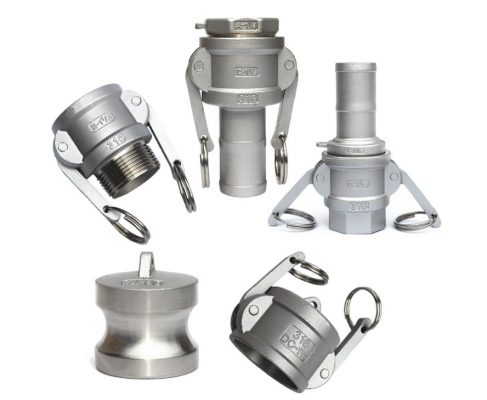
3. Factors to Consider When Choosing a Camlock Coupler Type
a. Nature of the Fluid
It’s imperative to consider the fluid’s properties, such as:
- Viscosity: Thicker fluids might require larger couplers for efficient flow.
- Temperature: Certain coupler materials might not be suited for very high or low temperatures.
- Chemical Nature: Corrosive or abrasive fluids might demand couplers made of specific materials like stainless steel.
b. Project Scale and Flow Rate
A large-scale project might require bigger couplers, and the desired flow rate can influence the size and type of camlock coupler.
c. Connection Frequency
For applications requiring frequent connections and disconnections, ease of use and durability become vital.
d. Budgetary Constraints
While camlock couplers are generally affordable, certain specialized types or materials can be pricier. It’s essential to find a balance between quality and cost.
4. Common Mistakes to Avoid
a. Overlooking Material Compatibility
Choosing an aluminum coupler for highly acidic fluids can lead to corrosion, potential leaks, or even catastrophic failure. It’s essential to match the coupler material with the fluid properties.
b. Neglecting Safety Protocols
Not adhering to safety precautions, like ensuring a proper seal, can lead to spillages or accidents. Always prioritize safety.
c. Choosing the Wrong Size
Selecting a coupler too large or too small can hinder operational efficiency, leading to reduced flow or potential equipment damage.
d. Forgetting Maintenance
Regular inspections ensure the longevity of camlock couplers. Overlooking wear and tear signs can lead to reduced efficiency or potential failures.
The intricate world of camlock couplers, with its variety and versatility, plays a pivotal role in numerous industries. Ensuring you have a clear understanding of the different types and their specific applications will guarantee that you make the right choice for your project. By also being aware of common mistakes, you can ensure operational efficiency, safety, and longevity in your setups.
5. Tips for Effective Use and Maintenance of Camlock Couplers
a. Proper Installation Techniques
For the longevity and effectiveness of camlock couplers, proper installation is paramount. Here’s a quick guide:
- Inspect: Before any installation, always inspect the coupler for any visible defects or damages.
- Clean: Ensure the coupler and the mating part are both clean and free from debris.
- Alignment: Make sure both parts are correctly aligned. Misalignment can lead to an improper seal.
- Secure: Once connected, ensure the arms of the coupler are firmly closed to achieve a secure connection.
b. Regular Inspections and Signs of Wear
Like any other industrial equipment, camlock couplers are not immune to wear and tear. Regularly check for:
- Physical Damages: Look for dents, cracks, or any other visible damage.
- Seal Integrity: Ensure that the sealing surfaces are intact and free from damages that might cause leaks.
- Operational Issues: Any difficulty while connecting or disconnecting might indicate a problem.
c. Best Practices for Cleaning and Storing Camlock Couplers
Ensuring your camlock couplers are clean can dramatically increase their lifespan and efficiency. Here’s how:
- Regular Cleaning: After use, especially with corrosive or sticky fluids, rinse the couplers with a compatible solvent or plain water.
- Drying: Once cleaned, allow the coupler to air dry or use compressed air. This prevents corrosion, especially in metallic couplers.
- Storage: Store in a cool, dry place. If possible, keep them in a case or bag to prevent dust accumulation.
With their simplicity and efficiency,
Camlock couplers have revolutionized fluid transfer across numerous industries. The versatility they offer, coupled with their ease of use, makes them an indispensable tool in many professionals’ toolkits. However, like any other tool, their efficacy is maximized when you choose the right type for the right job and maintain them with care. Our guide aims to provide you with a comprehensive knowledge of camlock couplers, assisting you in selecting the ideal option for your projects and guaranteeing their longevity through adequate maintenance and care. With the knowledge you’ve gained, you’re now well-equipped to harness the full potential of camlock couplers in your endeavors.


